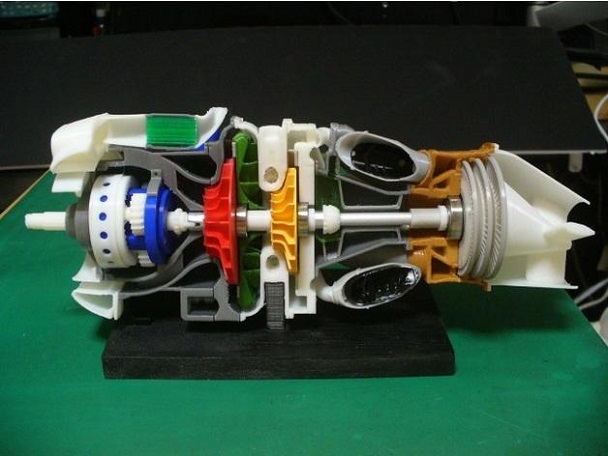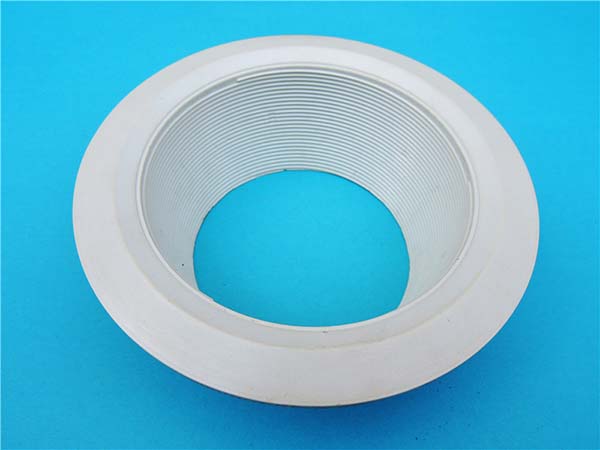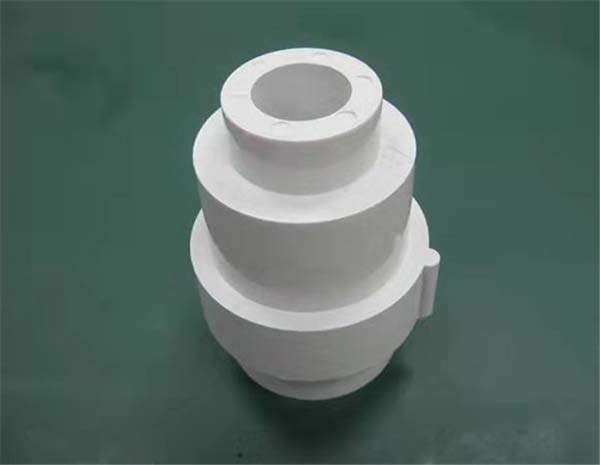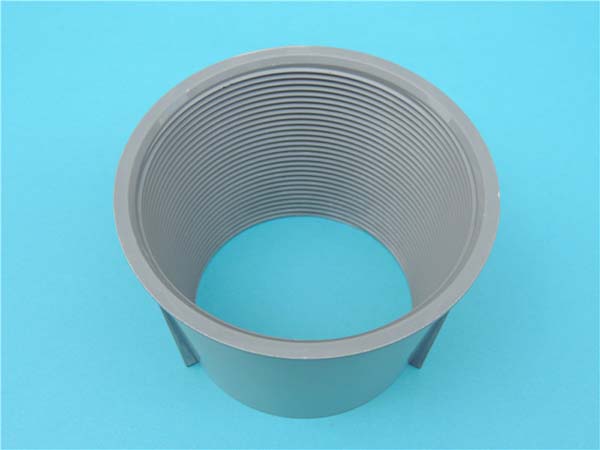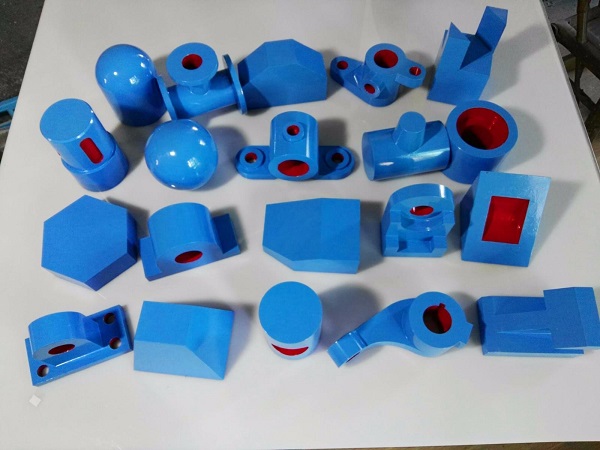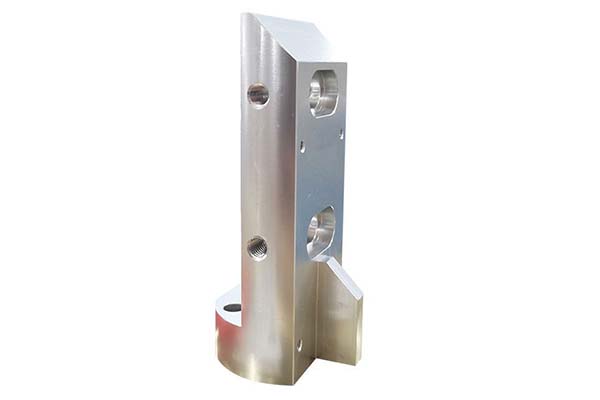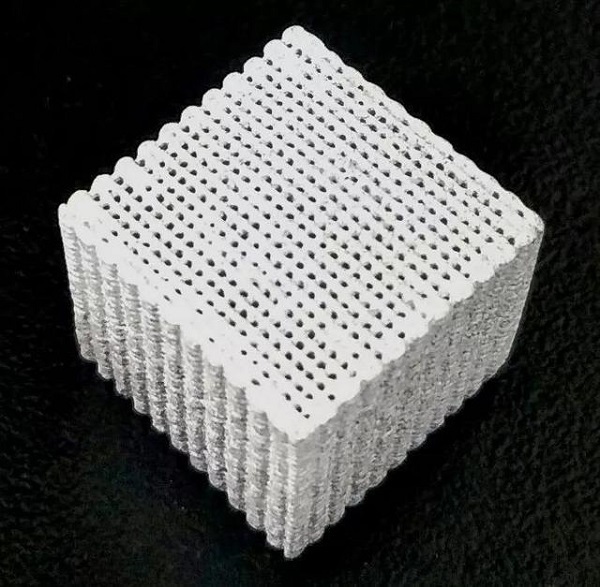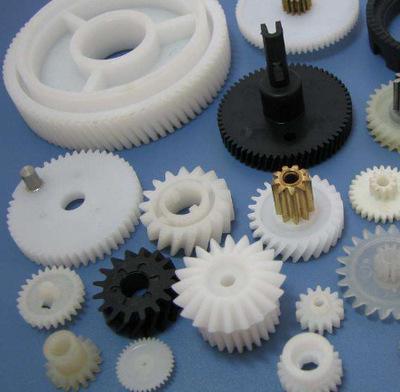The way we make molds is changing in a big way. For many years, companies have used CNC machines to cut molds from solid metal blocks. This method works well and is very precise, but it takes a long time and has some limits on what shapes you can make. Now, 3D printing (also called additive manufacturing) is creating new possibilities for making molds. This guide explains how to switch to printed molds and focuses on the main benefits that help businesses: much faster production times, the ability to create complex shapes with better cooling systems, and higher quality final products. We will answer important questions that manufacturing professionals have about cost, how long the molds last, and accuracy. We'll provide real data and examples to show how this new technology can give companies a competitive advantage. This is not just theory - it's a practical guide for engineers who want to improve their mold-making operations.
A Big Change in How We Make Molds
The decision to print injection molds instead of cutting them from solid metal blocks comes from clear business and operational benefits. Traditional cutting methods, while reliable and well-established, have built-in limitations that 3D printing directly solves. Long waiting times measured in weeks or months, design restrictions based on what cutting tools can reach, and high initial costs for complex or small-batch tools are common problems. 3D printing flips this model around.
By building the mold layer by layer from metal powder, 3D printing significantly reduces waiting times, allows unlimited design freedom for internal features, and enables rapid prototyping and changes at a much lower cost than traditional methods. The difference is dramatic, showing a fundamental change in how tooling can work - from a long-term, expensive investment to a more flexible, performance-focused asset.
| Metric | Traditional CNC Manufacturing | Additive Manufacturing (DMLS/SLM) |
| Lead Time | Weeks to Months | Days to Weeks |
| Geometric Complexity | Limited by tool paths and cutter access | Nearly unlimited; complex internal geometries are standard |
| Cooling Channel Design | Straight, gun-drilled lines | Complex, freeform conformal channels |
| Cost for Low-Volume/Prototypes | High setup and machining cost | More economical; no complex CAM programming |
| Material Waste | High (subtractive process) | Low (additive process) |
| Design Iteration | Costly and time-consuming | Fast and relatively inexpensive to print a new version |
Main Technologies and Materials
For production-quality injection molds, metal 3D printing is the industry standard. The technologies and materials used are specifically designed to handle the tough heat and mechanical stresses of the injection molding process. Understanding these core components is essential for any team considering this technology.
Direct Metal Laser Sintering (DMLS)
The main technology that makes high-performance metal molds possible is Direct Metal Laser Sintering (DMLS), also known as Selective Laser Melting (SLM). This powder bed fusion process works by spreading a very thin layer of fine metal powder over a build plate. A high-power laser then selectively scans the layer, melting the powder particles together based on a 3D computer model. The build plate lowers, a new layer of powder is applied, and the process repeats, building the solid metal part layer by layer. Think of it like a 3D medical scan, but instead of X-rays showing a slice, a laser is solidifying one. This method produces very dense (typically over 99.9%) and strong metal parts with fine details and complex internal structures, making it perfect for manufacturing mold cavities, cores, and inserts.
Important Mold Materials
How well a printed mold performs depends directly on the material chosen. The choice depends on the specific requirements for hardness, wear resistance, heat conduction, and operating temperature. Two materials have become industry standards for printed tooling.
- Maraging Steel (e.g., MS1, 18Ni300)
- Key Properties: This material is valued for its exceptional strength and high hardness, which are achieved through a simple, low-temperature aging heat treatment. This process reduces the risk of part distortion and warping that can happen with the high-temperature quenching required for traditional tool steels. It also has good weldability, which is a significant advantage for making repairs or design changes to the mold. Its ability to create extremely fine features makes it a top choice.
- Best Use Case: Perfect for printing complex inserts with detailed features, fine textures, or integrated cooling channels that follow part contours. It is also well-suited for prototype molds and applications where post-print modifications or welding may be necessary. After heat treatment, Maraging Steel can achieve a hardness of approximately 52-54 HRC.
- Tool Steel (e.g., H13)
- Key Properties: H13 is a chromium-based hot-work tool steel and a long-standing benchmark in the traditional tooling industry. Its reputation is built on high-temperature strength, excellent thermal fatigue resistance, and superior wear resistance. When processed via DMLS, H13 keeps these critical properties, making it a trusted choice for demanding applications.
- Best Use Case: Best for direct replacement of traditionally made production molds, particularly in high-wear scenarios involving abrasive materials like glass-filled polymers. It is the go-to material for long production runs where durability and thermal stability are most important. Properly printed and heat-treated H13 can reach a hardness of 48-52 HRC, providing the toughness needed to withstand millions of cycles.
Unlocking Performance: Cooling Channels That Follow Part Shape
The single most impactful advantage offered by printing molds is the ability to design and integrate cooling channels that follow the shape of the part (called conformal cooling). This capability alone can justify adopting 3D printing, as it delivers performance improvements that are physically impossible to achieve with traditional methods.
Conformal cooling is defined as a network of cooling channels that follow the precise 3D contours of the mold's cavity and core surfaces, maintaining a consistent distance from the part. This stands in stark contrast to the limitations of traditional manufacturing.
- Traditional Cooling: Relies on straight, drilled lines. These lines cannot follow complex part geometry, inevitably creating inconsistent distances to the molding surface. This results in "hot spots" in thick sections or areas far from the cooling line, and "cold spots" elsewhere. The consequence is uneven cooling, which extends cycle times and is a primary cause of part defects.
- Conformal Cooling (via DMLS/SLM): Because the mold is built layer by layer, intricate, free-form cooling channels can be designed directly into the mold inserts. These channels snake around complex features, maintaining a uniform distance from the molding surface. This allows for rapid and even heat removal across the entire part.
The Real Benefits
Implementing conformal cooling translates directly to measurable improvements in production efficiency and part quality.
1. Cycle Time Reduction: Cooling is often the longest phase of the injection molding cycle, accounting for up to 70% of the total time. By removing heat more rapidly and uniformly, conformal channels drastically shorten this phase. Reductions of 15-50% are commonly reported, with the greatest gains seen in parts with thick walls or complex geometries. This translates directly to higher machine output and lower cost per part.
2. Improved Part Quality: Uneven cooling is the root cause of many common molding defects. By creating a consistent thermal profile across the mold surface, conformal cooling reduces or eliminates these issues. This includes a significant reduction in sink marks (depressions in thick sections), warpage (distortion from uneven shrinkage), and internal stresses that can compromise the part's structural integrity and long-term performance.
3. Enhanced Dimensional Stability: Consistent, predictable cooling leads to consistent, predictable shrinkage. This results in parts with superior dimensional stability and tighter tolerances from shot to shot. For high-precision components or assemblies, this level of repeatability is critical and often difficult to achieve with conventional cooling.
Design Considerations
Effectively designing conformal channels requires a shift in thinking. It is not merely about placing a channel near a hot spot. Engineers must consider factors such as the optimal channel diameter (typically 3-8mm), the ideal distance from the cavity wall (often 1.5-2x the channel diameter), and the flow rate required to maintain turbulent flow for efficient heat transfer. Advanced thermal simulation software is an essential tool in this process, allowing designers to virtually model the heat flow within the mold and optimize the channel layout before committing to the print.
The Combined Manufacturing Approach
While printing an entire mold block is possible, it is often not the most practical or cost-effective strategy. A more practical and powerful approach is hybrid manufacturing, a method that combines the strengths of 3D printing and traditional CNC machining to deliver an optimized solution. This model has become the best practice for implementing printed tooling in real-world production environments.
The Hybrid Strategy
The core principle of the hybrid model is to use each manufacturing process for what it does best.
- Use 3D Printing (DMLS/SLM): Print only the geometrically complex or thermally demanding components of the mold. This typically includes the core and cavity inserts, especially those that have been redesigned to incorporate conformal cooling channels or feature intricate, hard-to-machine details.
- Use CNC Machining: Create the simpler, larger components of the tool, such as the main mold base, ejector system, and support plates, from standard tool steel (e.g., P20). CNC machining is also used for the critical final finishing steps on the printed inserts to achieve required tolerances and surface finishes.
Why This Approach Works
The hybrid model offers a balanced solution that maximizes performance while managing costs and addressing the perceived limitations of a purely 3D printing approach.
- Cost-Effectiveness: Printing a small, complex insert is significantly faster and uses far less expensive metal powder than printing an entire multi-ton mold block. The bulk of the tool is made using cost-effective, conventional methods, targeting the high-value 3D printing process only where it adds the most value.
- Superior Surface Finish: While 3D printing can produce good surfaces, achieving the mirror-like SPI A-1 or A-2 finishes required for optical or high-cosmetic parts often requires post-processing. The hybrid approach seamlessly integrates this step, allowing the critical molding surfaces of the printed insert to be precision-milled, ground, or polished to meet any specification.
- Accuracy and Tolerances: CNC machining excels at producing highly accurate flat and parallel surfaces. By machining the mold base and the pockets for the inserts, the hybrid model leverages CNC's strength to ensure perfect alignment, shut-off, and fit between all tool components.
- Material Flexibility: This model allows for strategic material selection. The mold base can be made from a standard, durable steel like P20, while the high-performance printed insert, made from H13 or Maraging Steel, is tasked with handling the demanding thermal load and complex part geometry. In our experience, the most successful projects identify the most thermally critical or geometrically complex part of the mold and designate it as a printed insert. This targeted approach yields 80% of the benefit for 20% of the cost of a fully printed tool.
Durability and Lifetime
A common and valid question from engineers and production managers is: "Will a printed mold last as long as a traditional one?" The concern centers on the tool's ability to withstand the relentless cycles of heating and cooling without premature failure. The answer lies in understanding the material science of printed metals and their resistance to thermal fatigue.
Thermal fatigue is the primary failure mechanism for injection molds. It is the material stress, leading to micro-cracks and eventual failure, caused by the constant expansion and contraction as hot plastic is injected and then rapidly cooled.
Material Performance
The durability of a printed mold is directly related to the chosen material and its post-processing.
- H13 Tool Steel: As the industry standard for hot-work tooling, H13's performance is well understood. When produced via DMLS and subjected to proper heat treatment protocols, printed H13 exhibits mechanical properties, including hardness and tensile strength, that are highly comparable to its traditionally wrought counterpart. Its excellent thermal fatigue resistance is retained, making it a reliable choice for long-run production tooling.
- Maraging Steel: While known for its exceptional strength and hardness at room temperature, Maraging Steel's primary advantage is not necessarily superior high-temperature fatigue resistance compared to H13. It is chosen for its ability to be hardened with a low-temperature heat treat, minimizing distortion and making it perfect for highly detailed inserts that might be compromised by the high-heat quenching process required for H13.
The Role of Material Structure
The 3D printing process itself creates a unique material structure. The rapid heating and cooling during the laser sintering process results in a very fine-grained structure. While the as-built part can have some internal stresses, these are relieved through post-print heat treatments. For the most demanding applications, an optional process called Hot Isostatic Pressing (HIP) can be employed. HIP subjects the part to high temperature and uniform high pressure, effectively eliminating any microscopic internal voids and creating a fully dense (over 99.9%) and uniform material. This refined, isotropic structure is crucial for preventing the initiation and propagation of the micro-cracks that lead to thermal fatigue. In fact, multiple studies have shown that printed H13, especially after HIP treatment, can achieve a fatigue life comparable to, and in some cases exceeding, that of traditionally machined H13, particularly when combined with the stress-reducing benefits of uniform heat extraction from conformal cooling.
The Financial Analysis
A simple "tool vs. tool" cost comparison between a printed mold and a machined mold is misleading and incomplete. The true financial analysis must account for the total cost of ownership (TCO) and the impact of the tool's performance on production efficiency and profitability. The initial investment in a printed mold insert may be comparable to, or even higher than, a conventional one, but its downstream benefits often deliver a rapid return on investment.
To make an informed decision, engineers must use a comprehensive cost-modeling framework that looks beyond the upfront price tag.
A Framework for Analysis
The following table provides a structure for comparing the total costs associated with each tooling method. The key is to quantify not just the direct costs, but also the indirect costs and revenue impacts.
| Cost Factor | Traditional CNC Mold | Printed Mold (with Conformal Cooling) |
| Upfront Tooling Cost | High, driven by complex CAM and long machine times for intricate features. | Variable. Can be higher for simple parts, but often lower for highly complex inserts. |
| Tooling Lead Time Cost | High. Weeks or months of delayed production represents lost revenue and delayed time-to-market. | Low. Faster tool delivery accelerates production startup and market entry. |
| Cost Per Part (Cycle Time) | Higher. Longer cooling phases mean lower machine throughput and higher operational cost per part produced. | Lower. Cycle time reductions of 15-50% directly increase output and profitability. |
| Scrap Rate / Quality Cost | Higher potential for defects (warpage, sink marks) leads to more scrapped parts and higher quality control costs. | Lower. Uniform cooling drastically reduces defect rates, saving material and inspection time. |
| Tool Modification Cost | Extremely high. Design changes often require extensive welding, re-machining, or a completely new tool. | Moderate. It is relatively fast and cost-effective to print a new, modified insert and fit it into the existing mold base. |
| Total Cost of Ownership (TCO) | The sum of the above factors often reveals a high long-term cost, despite a potentially lower initial price. | While the initial investment may be notable, the cumulative savings in cycle time and quality yield a lower TCO and faster ROI. |
By using this framework, a clear business case emerges. For high-volume production, the savings generated by a 20% reduction in cycle time and a 5% reduction in scrap rate can quickly eclipse the initial cost difference of the tool, making the printed mold the more profitable long-term investment.
Proof in Practice: Automotive Lighting
To validate the concepts discussed, consider a real-world application from the demanding automotive sector. This case study demonstrates the tangible results achieved by implementing a hybrid manufacturing strategy with conformal cooling.
The Challenge:
An automotive Tier 1 supplier was manufacturing a complex headlamp lens from polycarbonate (PC). The part design included thick optical sections adjacent to thin structural features. With their traditional, straight-drilled cooling channels, the mold suffered from severe hot spots in the thick areas. This led to unacceptably long cooling times (55 seconds per cycle) and a high scrap rate of 9% due to visible sink marks and high levels of molded-in stress, which compromised the lens's optical clarity and long-term stability.
The Solution:
Our engineering team implemented a hybrid manufacturing solution.
1. The existing mold base was retained.
2. The core mold insert, which formed the critical optical surfaces of the lens, was completely redesigned in CAD to include a complex network of conformal cooling channels. These channels followed the contours of the thick lens sections precisely.
3. This new insert was printed using DMLS technology with Maraging Steel, chosen for its ability to hold the fine detail of the optical features and its simple, low-distortion heat treatment process.
4. After printing and heat treatment, the molding surfaces of the insert were CNC-machined and then polished to an optical-grade finish (SPI A-1).
5. Finally, the finished insert was fitted into the original P20 mold base.
The Results:
The performance improvements were immediate and dramatic. The data speaks for itself:
- Cycle Time Reduction: The overall cycle time was reduced from 55 seconds to just 38 seconds, a 31% improvement in productivity.
- Scrap Rate: The scrap rate plummeted from 9% to less than 2%, saving significant material and post-processing costs.
- Part Quality: The uniform cooling provided by the conformal channels completely eliminated visible sink marks. Furthermore, polariscope analysis showed a drastic reduction in molded-in stress, resulting in superior optical clarity and improved dimensional stability.
- Return on Investment (ROI): The higher upfront cost of designing and printing the conformal-cooled insert was fully recovered in under four months of production, driven by the increased machine throughput and drastically reduced scrap costs.
The Future of Tooling
The evidence is clear: 3D printing of molds, particularly when deployed through a strategic hybrid model with conformal cooling, is no longer a niche or experimental technology. It is a proven, powerful tool for modern injection molding operations. This approach directly addresses the most persistent challenges in tooling and production, delivering quantifiable gains that are unattainable with purely traditional methods.
The core message for today's manufacturing leaders is to look beyond the initial price of the tool and evaluate the total financial and operational impact. The adoption of printed molds delivers a combination of benefits:
- Speed: Both in initial tool lead time and in production cycle time.
- Quality: Through the reduction of defects, leading to less scrap and more consistent parts.
- Complexity: By enabling performance-driving features like conformal cooling that were previously impossible.
Embracing this technology is not just about acquiring a new capability; it requires a shift in mindset towards "design for additive manufacturing" (DfAM). It means rethinking how molds are designed from the ground up to leverage geometric freedom and optimize thermal performance. For those willing to make this shift, the use of printed molds will be a key differentiator, unlocking new levels of efficiency, quality, and profitability, and securing a critical competitive advantage in the years to come.

